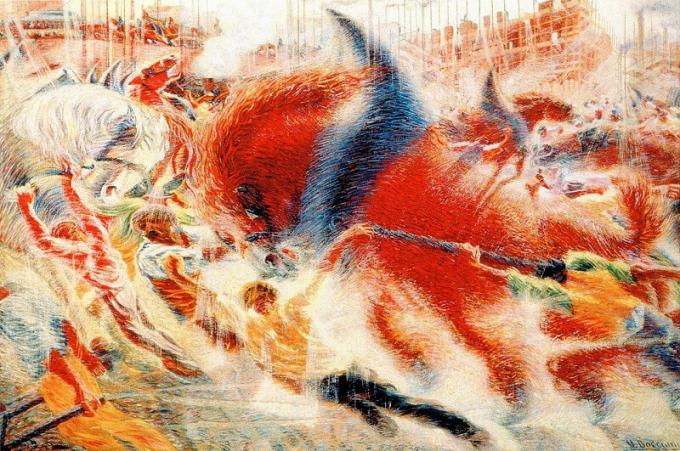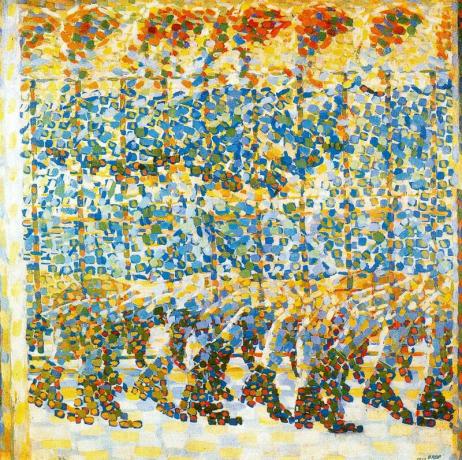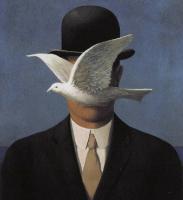Futurism: what it is, and characteristics of this Artistic Movement
It is very likely that you have heard the phrase that says that a racing car is more beautiful than the Victory of Samothrace. It is included in the first manifesto of the Futurist movement, published in the French magazine Figaro in January 1909. The phrase is still curious even in the 21st century, when we have already left the concept of classical beauty far behind.
Who were the futurists? What was the context in which they arose? In this article We are going to outline a brief history of Futurism and its main artists..
What is futurism?
At the end of the 19th century, the so-called “social verismo” triumphed in Italy, which made a crude denunciation of the situation of the working class. It is the time of anarchism and social convulsions, which shake the foundations of the bourgeoisie.
In this climate of struggle and confrontation, some young people, the majority coming from anarchist and communist circles, decided to found a new artistic movement. Fed up with the corseting into which “official” art has fallen, as well as with the privileged situation and immobility of the upper classes and the Church, set their sights on an art with a vocation for modernity, for "future".
Thus, his first manifesto, published in 1909, is a clear declaration of intent; the "old" no longer has a place in the world of art, and neither do classical and academic values, related to that expired and obsolete art. They consider that Italy has always suffered from what they call "passatism", that is, an obsession with the past (past), the main obstacle to their progress as a people. The futurists therefore propose a new way of making art, much more in keeping with the new times.
The importance of Futurism goes far beyond being a simple aesthetic renovation; as we will see later, it also supposes an ideology, a current of thought closely related to the social reality and the future of the Italian Republic. Besides, the futurist manifesto of 1909 is the first of the avant-garde manifestos, which is a true revolution in the history of art.
- Related article: "What are the 7 Fine Arts?"
Speed, dynamism and modernity
And what are these new times? It is the era of the first automobiles, of the first air flights, of the growth of factories and of mass production. Futurists see the world as something always in motion.; What's more, this must be a feverish, crazy movement, like the movement of a racing car.
The city itself is immersed in a constant acceleration: the rhythms of the new times rush, the human centers twist and explode in all directions. The future is speed, dynamism, change.
For the futurists, there is no speed without mechanical progress. Nor does the future or modernity exist without it. That is the motto of the futurists, who thus merge the concept of "progress" with the advancement of technology. There is no time for undaunted classical statues, or for balanced and calm compositions: the 20th century should be the century of revolution, of dynamics, of running without hardly recovering the breath.
Thus, the compositions are inspired by the realities of the century that is beginning. The futurist Umberto Boccioni paints between 1910 and 1911 the canvas the city rises, which was presented at the free art sample from Milan like I work ("The job").

In the painting we can see some workers and some horses, confusedly mixed in some quick brushstrokes that try to capture the bustle of work.
For his part, the also futurist Giacomo Balla left us one of the most representative paintings of the movement, the famous Girl running on the balcony (or on the stairs, according to some sources), which tries to capture the fast movement of a girl in the middle of a race. To do this, Balla uses a technique inspired by the newborn cinematographer: he paints “repetitions” of the girl on the canvas, so that the eye has the sensation that she is moving.

The representation of acceleration, electric light and speed constituted a real challenge for the futurists.. Because how to capture something intangible on an immobile support? The solutions found by the different artists are heterogeneous and very varied: from brushstrokes loose reminiscent of the impressionist movement, up to the divisionism that also used the fauves. For all these reasons, Futurism was, as many critics have argued, a movement more demanding than practical and, above all, loaded with political ideology.
- You may be interested in: "Is there an art objectively better than another?"
an ideological current
If the futurist group has gone down in history for something, it is because it is closely linked to Italian fascism and the figure of Mussolini. And it is that in futurist ideology we find concepts closely linked to hate speech and violence; For example, in the aforementioned 1909 manifesto, it was said that no masterpiece could be masterpiece if it was not "aggressive". In the same way, in the manifesto it was requested to burn down all the museums (in the paroxysm of his aversion towards everything traditional) and, at the doors After the First World War, the futurists argued that war was a "social hygiene", the only means for the construction of a new world.
The main champion of this violent ideology was Filippo Tomasso Marinetti (1876-1944), the leader of the movement. A symbolist poet, he himself recounts how, after an accident he suffered with his car while trying to dodge some cyclists, he had a kind of illumination that led him to the writing of the first manifest. These new ideas revolved around the exaltation of the world of machines and the love of risk and recklessness, personified in speed. Marinetti expressed his ideals through a provocative, violent and tremendously exalted language, which was also not too far from the language used by radical anarchists.
Another point in common that the futurists had with the newborn Italian fascism was their exacerbated nationalism.. The Futurists, and Marinetti in particular, wanted to build a new Italy, and to do so they saw the war as an opportunity to demonstrate the “lost” bravery and courage of the Italians. Needless to say, the passing of the First World War swept away this "courage" from their mouths in a certain way; many of the artists did not return from the front. Those who remained joined, like many others, Mussolini's fascists; Especially Marinetti.
- Related article: "What is creativity?"
Futurism outside of Italy
Although Futurism is linked to Italy, the movement had a notable influence in pre-revolutionary Russia, especially in the constructivism of painters like Vladimir Maiakovksi (1893-1930). In 1912, he and some of his companions signed the manifesto Slap to the taste of the public, with a rather explicit title, in which they wrote down the bases of Russian Futurism, just as the Italian Futurists had done in 1909.
However, the similarity between both currents did not go beyond certain aesthetic characteristics and their intention to stir up society. Because Mayakovsky was, unlike Marinetti, a staunch anti-war, and the Italian's war propaganda made him nauseous. In addition, the Italian futurists leaned more towards a revolutionary ideology of an anti-imperialist nature, which openly clashed with Mussolini's fascism.
One of the most important painters of the movement in Russia was Natalia Goncharova (1881-1962) who, during his Futurist period, produced works such as the famous Cyclist (1913), which recovers the idea of dynamism and speed so popularized by Marinetti and his followers.


